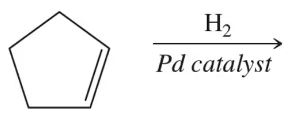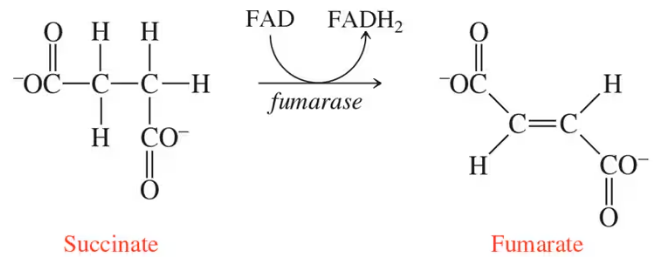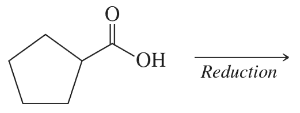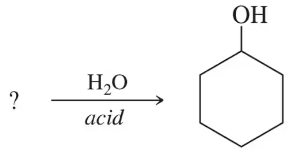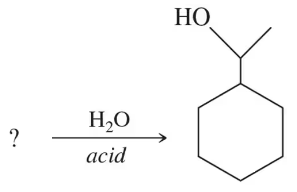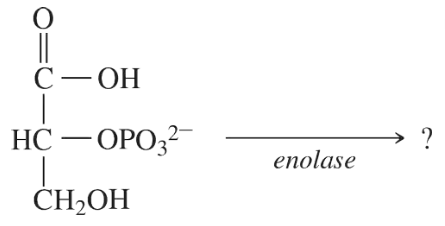 Back
BackProblem 29c
Are the substances shown in italics undergoing oxidation or reduction?
(c) Wine (containing ethanol, CH3CH2OH) sours to vinegar (CH3COOH).
Problem 30c
Are the substances shown in italics undergoing oxidation or reduction?
(c) The biomolecule FADH2 loses hydrogen, becoming FAD.
Problem 39a
Write the products for the following hydrogenation reactions:
(a)
Problem 39c
Write the products for the following hydrogenation reactions:
(c)
Problem 40c
Write the products for the following hydrogenation reactions:
(c)
Problem 57b
Identify the main organic reaction shown as condensation, hydrolysis, oxidation, or reduction:
(b)
Problem 63b
Determine whether each of the following organic reactions is an oxidation or a reduction reaction. (Only the organic compounds are shown.)
(b)
Problem 65b
Write the products of the following reactions:
(b)
Problem 66a
Write the products of the following reactions:
(a)
Problem 69a
Fill in the missing organic products or reactants for the following hydrogenation reactions:
(a)
Problem 70
Epinephrine is the active ingredient in the EpiPen® used to treat severe allergic reactions. EpiPens expire due to the oxidation of the epinephrine. One of these reactions is shown below. Circle the groups in the product that were oxidized.
Problem 72a
Fill in the missing organic products for the complete hydrogenation of the following:
(a)
Problem 72c
Fill in the missing organic products for the complete hydrogenation of the following:
(c)
Problem 73b
Fill in the missing organic product or reactant for the following hydration reactions:
(b)
Problem 74a
Fill in the missing organic product or reactant for the following hydration reactions:
(a)
Problem 74b
Fill in the missing organic product or reactant for the following hydration reactions:
(b)
Problem 75a
How do low-carb diets work? We store glucose molecules in our muscles and liver as glycogen, which consists of thousands of glucose molecules linked together. During periods of fasting, we can activate glycogen to provide glucose.
(a) Determine which of the following reactions below would be a condensation and which would be a hydrolysis.
Problem 75b
How do low-carb diets work? We store glucose molecules in our muscles and liver as glycogen, which consists of thousands of glucose molecules linked together. During periods of fasting, we can activate glycogen to provide glucose.
(b) Individuals who do not eat carbohydrates do not store the same levels of glycogen as people who do. Explain the weight loss associated with storing less glycogen.
Problem 80
The reverse reaction of hydration is dehydration. The dehydration of an alcohol involves removing an OH from one carbon and an H from the carbon next to it to form an alkene. In glycolysis, the enzyme enolase catalyzes the dehydration of 2-phosphoglycerate to form phosphoenolpyruvate (PEP), which contains a carbon–carbon double bond. Complete the reaction below by drawing the structure of PEP.



